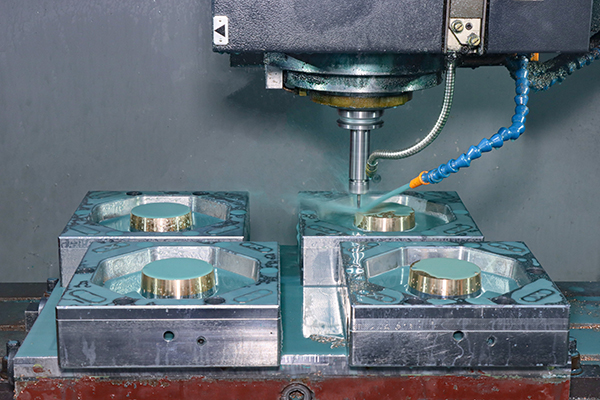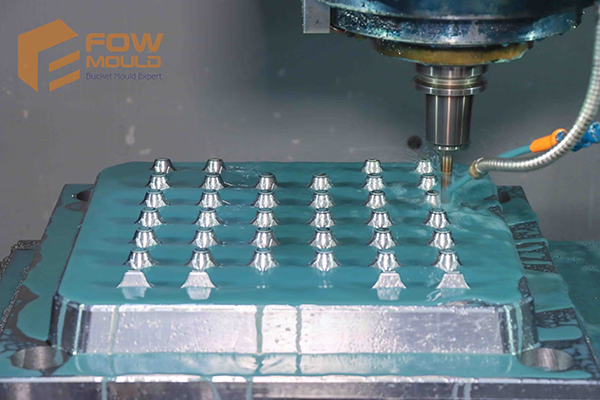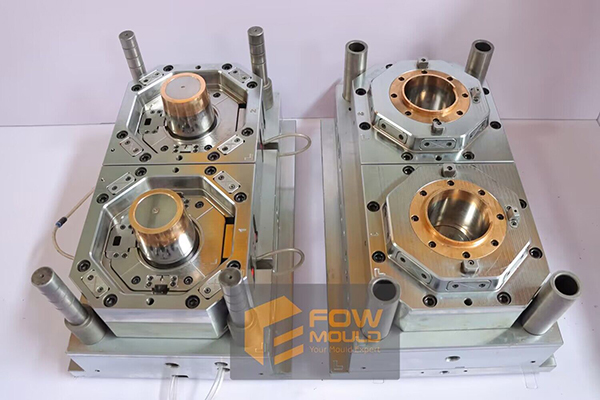Tips to Improve Multi-Cavity Molds
- Home
- > Blog
- > Tips to Improve Multi-Cavity Molds
Share :
Share :
Introduction
It sounds simple to boost production capacity and lower component costs by switching from a single-cavity mold to a multi-cavity one that can deliver eight or more parts in one go. It is possible in many instances, but only if the necessary measures are taken, and the requisite preliminary adjustments are made before commencing the production since the parts that engage flawlessly in a single-cavity mold might not cooperate with a multi-cavity mold.
So, here is a comprehensive guide that covers some of the best ways to achieve multi-cavity mold design optimization.
Valve-Gate Optimizations to Solve Mold Imbalancing
Despite being a costly solution for unbalanced molding, sequential valve gating can minimize flashing in fast-filling cavities and enable slower-filling cavities to keep filling. It’s more probable to result in family molds with varying thicknesses and wall sections.
Also, a flow-control valve regulated by a worm-gear assembly can be employed when cavities do not fill consistently. At the press, the molder can regulate the flow of each nozzle by adjusting a dial while the settings remain the same.
Moreover, we can use a closed-loop process control at each molding gate to ensure quick initiation, smoother mold adjustments, and reduced rejection ratios. It enables the molder to create a time and pressure profile for every drop point, which aids in controlling the packing and filling rate. Pressure sensors are placed to regulate the valve pins and guarantee consistent pressure distribution throughout the filling procedure.
Side-Actions and Pick-Outs Are Crucial to Consider
Although side-actions can function well in a single-cavity mold, considering the part design and dimensions, they are unlikely to satisfy multi-cavity tooling requirements. Another thing to consider is manually loaded inserts, also known as pick-outs.
For instance, in the case of single-cavity molding, the insertion of a small metal block into a mold cavity to make a cutting on an interior element is simple. On the other hand, the same procedure using multi-cavity equipment demands more time and shouldn’t be employed for bulk production projects.
Gate Placement Is the Key to Multiple-Part Production
The injection molding technique employs several types of gates. Hot tip and pin-style gates are frequently used on single-cavity molds to deal with design-related problems involving sophisticated component dimensions and geometries and to minimize gate vestige that must be clipped from the completed workpiece. But one thing to note here is that they aren’t suitable for multi-cavity molds.
In this case, tab gates often referred to as edge gates, are prevalent. The flexibility in gate placement is crucial when trying to fit several pieces into a mold. Furthermore, the greater vestige that emerges with tab gating effectively absorbs residual flow stress near the mold section.
Effective gate placement in multi-cavity molds can also help us avoid expensive part redesign by adjusting the original gate location with respect to the part orientation early in the design cycle before ramping up production.
Managing Wall Thickness to Control Stress Marks
Controlling stress marks and ensuring that the design complies with minimal wall thickness standards while keeping homogeneity in the thicknesses of adjoining elements are both reliant on managing wall thickness. We must be mindful that high injection pressure is present at the gate. A slender wall also serves as a constraint, which raises injection pressure.
So flashing, shearing, and mold damage might happen if the wall thickness and gate are out of proportion. It is possible to maintain a balance between wall thickness and gate pressure by either reducing injection pressure, raising wall thickness close to the gate, or both.
Material Flow Consideration for Multi-Cavity Tooling
Fluid materials, such as liquid silicone rubber (LSR), are frequently suitable for multi-cavity applications. Most of the issues concerned with family and multi-cavity molds are considerably diminished since silicone flows more readily than nickels.
LSR is a fantastic choice if the project calls for an adaptive material that exhibits excellent dimensional stability and strength properties, performs well at temperature extremes, is chemically resistant, and is biocompatible.
Application of Sensor-Based Technologies
One typical method for preventing flow fluctuations when filling multiple cavities at once is the application of cavity pressure sensing technology. Molders can discover more about the root of complications with flow pressure and imbalance. After an imbalance gets identified, cavity pressure sensing can assist with finding a fix. It can reveal details about the level of the cavity filled.
The molder could utilize low-velocity injection to ensure the remaining sections are filled with more homogeneous pressures. Through the application of cavity pressure sensing, it is possible to observe exactly how pressure changes as the mold fills up and whether there are any imbalance issues. Then we can easily monitor the pressure buildup.
A metal lathe is all you need if you are looking to process a bar or disk-type metal workpiece with an excellent surface finish.
Conclusion
The goal of effective injection-molded part designing is to achieve overall cost reduction. Testing numerous versions of the similar molded component concurrently with different single-cavity molds, selecting the finest, and then moving onto a multi-cavity mold is a smart method to help reduce time-to-market.
About the Author: Vincent Hua
Vincent Hua is the Marketing Manager at TSINFA. He is passionate about helping people understand high-end and complex manufacturing processes. Besides writing and contributing his insights, Vincent is very keen on technological innovation that helps build highly precise and stable CNC Machinery.



